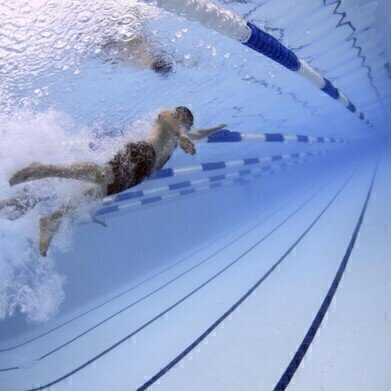GC-MS
Understanding the Chemical Reactions in your Swimming Pool with Chromatography
Aug 24 2016
It’s the height of summer — believe me, this is as good as it gets — and the local swimming pool will be busier than ever. Athletes dreaming of Olympic glory, parent’s hoping for a little respite and teenagers bombing and petting.
But beneath the shrieks and splashes of fun and play, complex chemical reactions are taking place and it takes advanced chromatography to find all of the by-products that result from your brief dip in the pool. But where do these products come from, how can they be controlled and should we be wearing breathing apparatus as we swim our lengths? Let’s take a dip and see what chemistry is going on in the murky waters of your local pool.
Water everywhere
Making water safe to swim in takes a lot of time and effort. Untreated water can contain lots of nasties such as bacteria like Escherichia coli and parasites like Cryptosporidium parvum — nasty bugs that can cause unpleasant symptoms in many people and could be fatal in others. To get rid of these bugs disinfectant chemicals and radiation has to be used.
The most common methods of disinfecting swimming pools include chlorine, bromine and ultraviolet (UV) radiation — sometimes singly and sometimes in combination with each other — and other methods such as filtration and pH correction. And if people stayed out of the pools the water would stay nice and clean.
But unfortunately, it’s people using the pools that causes the problems and results in the complex chemical reactions. When people use a pool they bring into the water all sorts of organic material — dirt, sweat, urine and skin care products, even if they shower immediately before entering the pool — which leads to the formation of disinfection by-products (DBPs).
That pool smell isn’t chlorine
The three main culprits that humans bring into a pool that make DBPs are dirt, sweat and urine. These three all use up the chlorine in the pool and make all kinds of weird chemicals — including some that haven’t even been seen before. Some studies have found thousands of different DBPs in swimming pool water — but the most common are chloroform and trichloramine.
In a paper published in Environmental Science and Technology, a team looked at the impact of human precursors on the levels of DBPs in pools. Using gas chromatography and mass spectrometry, they identified many DBPs which have a known mutagenic risk — and the levels increased with human use. The advantages in using GC-MS are discussed in the article, Adding more Power to your GC-MS Analysis through Deconvolution.
The route of DBPs into the body is riskier through the skin than through swallowing the water. Whether pool water is dangerous is another question — one that is harder to answer. But the recommendation is to clean water regularly and make sure people using the pool have good hygiene habits.
No peeing in the pool please.
Digital Edition
Chromatography Today - Buyers' Guide 2022
October 2023
In This Edition Modern & Practical Applications - Accelerating ADC Development with Mass Spectrometry - Implementing High-Resolution Ion Mobility into Peptide Mapping Workflows Chromatogr...
View all digital editions
Events
Apr 28 2024 Montreal, Quebec, Canada
May 05 2024 Seville, Spain
May 15 2024 Birmingham, UK
May 19 2024 Brno, Czech Republic
May 21 2024 Lagos, Nigeria














